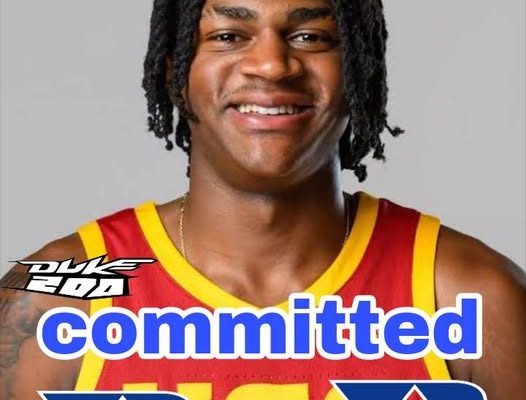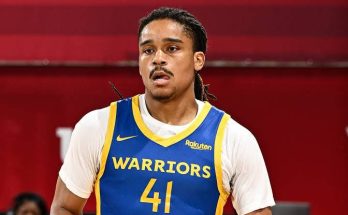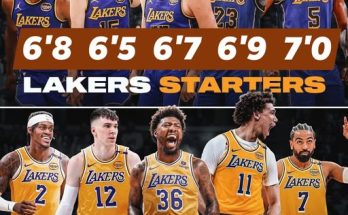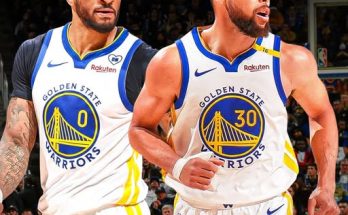In the ever-evolving landscape of college basketball, few stories have managed to send shockwaves through the sport quite like the decision made by the nation’s No. 1 high school player, who has officially turned down a massive $6.3 million NIL package and rejected offers from several SEC powerhouses to commit to Duke. In an age where the business side of college sports is more visible and more lucrative than ever, this decision reflects not only a commitment to tradition, development, and long-term vision but also raises important questions about the future of amateur athletics, the role of money, and the allure of elite programs like Duke that have remained dominant despite the rapid transformation of the recruiting game. The story, while surprising to many, carries with it layers of intrigue, history, and implications for what college basketball might look like moving forward.
For years, Duke basketball has thrived on its ability to not only recruit the top talent in the country but also to sell a brand that transcends financial incentives. Players from Christian Laettner and Grant Hill to Jayson Tatum and Zion Williamson have chosen to wear the Blue Devil uniform, understanding that the program’s visibility, media exposure, and NBA pipeline create opportunities far beyond a single college season. In this instance, however, what makes the decision so remarkable is that the stakes are different. The NIL era has fundamentally changed the way athletes and their families weigh opportunities, with programs using lucrative packages as major recruiting tools. To turn down over six million dollars in guaranteed NIL deals—especially when powerhouse SEC schools with rabid fan bases and booster networks were prepared to match or surpass that figure—requires a mindset that few could imagine possessing. Yet, it is exactly this mindset that makes the decision so powerful and symbolic.
This commitment to Duke reflects the enduring draw of a program that continues to capture the hearts of elite recruits despite the heavy influence of financial opportunities. The player, who has been labeled a generational talent and projected as a future top NBA draft pick, has already amassed a resume that speaks for itself. Dominant in every major high school tournament, named MVP in nearly every showcase he has participated in, and widely recognized as the most complete prospect in the class, he had no shortage of suitors. Schools like Kentucky, Auburn, and Alabama reportedly made aggressive pushes, and multiple SEC programs were not only offering substantial NIL opportunities but were also selling the chance to be the face of their program from day one. Yet, the pull of Duke, with its mixture of tradition, excellence, and the leadership of head coach Jon Scheyer, proved stronger than even the most enticing offers.
One of the key factors in this decision likely rests on the long-term vision of player development. While NIL deals can be life-changing, they are often short-term financial wins compared to the generational wealth created by becoming a successful NBA player. Duke has built its brand on preparing players for the professional ranks, with a long list of alumni thriving at the next level. The program’s reputation for balancing exposure, competitive scheduling, and preparation for the NBA draft is arguably unmatched. For a player who has been compared to the likes of Kevin Durant, Anthony Davis, and even LeBron James in terms of skill set and potential, the priority may not simply be about what is earned in the next 12 months but instead about building a foundation for a career that could span 15 years or more at the highest level. In this sense, turning down $6.3 million today could be framed as an investment in future earnings that could easily eclipse $100 million.
But beyond the financial and developmental aspects, there is something deeper at play here. The player’s decision speaks to the enduring cultural power of certain programs in college basketball. Duke represents more than just a school or a team—it represents a legacy. The Cameron Crazies, the rivalry with North Carolina, the national spotlight every single season, and the mystique built by Mike Krzyzewski over four decades continue to make the program one of the crown jewels of the sport. Even under Jon Scheyer, who is still relatively new as a head coach, the continuity of Duke’s vision has remained intact. For a teenager growing up watching the Blue Devils dominate primetime television, compete in Final Fours, and consistently produce NBA stars, the chance to be a part of that history may simply outweigh even the most extravagant NIL promises elsewhere.
In many ways, this story is a reminder that not every athlete is purely driven by immediate financial gain. While NIL has reshaped the game, passion, legacy, and development remain powerful motivators. For this player, choosing Duke is a declaration of intent—a signal that he is betting on himself, his long-term vision, and the belief that the right environment will bring out his full potential. His decision also sends a powerful message to other recruits and their families, demonstrating that even in this new age, money does not always win. There are still intangible elements that play a role in choosing a college home, whether it’s culture, legacy, or a coach’s ability to build trust and connection.
The reaction across the college basketball world has been telling. SEC fan bases, known for their passion and intensity, have expressed disbelief and frustration. The idea that their collective booster networks and NIL collectives could not sway the nation’s top player is a humbling reminder that tradition-rich programs like Duke continue to hold an edge in certain battles. Meanwhile, Duke fans have celebrated this decision as evidence that their program has not only survived but thrived in the NIL era. It is a validation of Jon Scheyer’s recruiting acumen and the university’s ability to stay relevant despite the seismic changes in the recruiting landscape.
The decision also raises broader questions about the sustainability of NIL-driven recruiting. While some players will understandably chase the largest offers, others may view the NIL market as secondary to long-term growth. Could this commitment spark a shift in the mentality of top-tier recruits? Will more players begin to balance financial offers with intangible factors like tradition, exposure, and development? Or is this more of an exception than a trend? Time will tell, but this decision certainly adds a new dimension to the conversation.
Furthermore, the player’s choice to turn down such a staggering figure adds to the lore surrounding him before he even steps foot on a college court. The willingness to forego immediate wealth adds a layer of maturity to his profile that NBA scouts and executives will undoubtedly take notice of. For an 18-year-old to display that level of foresight and confidence is rare, and it speaks volumes about his character and mindset. It suggests a level of discipline and long-term vision that bodes well for his future, both on and off the court.
There is also a symbolic weight to this story. In many ways, it is a reminder that college basketball is still about more than just money. The sport thrives on narratives, rivalries, and legacies. By committing to Duke, this player has ensured that he will be part of one of the most storied rivalries in all of sports: Duke vs. North Carolina. He has guaranteed himself the chance to play in some of the most electric environments in college basketball, to be coached at the highest level, and to compete for national championships. These experiences, while not quantifiable in dollars, are priceless in their own right.
From a practical standpoint, it’s not as though he will be without NIL opportunities at Duke. The program’s national profile, media reach, and alumni network ensure that he will have plenty of endorsement deals and financial opportunities, even if they don’t add up to the $6.3 million figure offered elsewhere. In fact, the visibility that comes with being a Duke Blue Devil could actually enhance his marketability long term. Playing on national television nearly every game, being part of March Madness storylines, and having his brand associated with one of the most recognized logos in sports all contribute to his off-court earning potential.
In the end, the decision of the nation’s No. 1 player to turn down millions of dollars and commit to Duke will be remembered as a defining moment in this era of college basketball. It is a testament to the enduring appeal of certain programs, the importance of long-term vision, and the fact that money is not always the deciding factor in life-changing decisions. It is a reminder that the heart of the game still beats in tradition, competition, and the pursuit of greatness.
This choice will continue to be dissected for months to come, especially as the player steps onto the court and begins his college career. Every performance will be measured against the backdrop of what he turned down and what he chose instead. Should he dominate at Duke, win championships, and position himself as the No. 1 pick in the NBA Draft, his decision will be celebrated as one of the wisest moves in recent memory. Should he struggle, critics will inevitably question whether the financial security he passed on was worth it. Either way, his legacy has already begun, defined by a bold decision that has captivated the basketball world.
At its core, this story encapsulates the beauty of college basketball. It is a sport where money matters but does not always win. It is a world where tradition, loyalty, and vision still have a place, even in the age of NIL. And it is a stage where the nation’s No. 1 player can still shock everyone—not with a dunk or a buzzer-beater—but with a choice that defies expectations and reminds us why we love the game.



